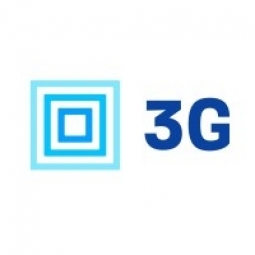公司规模
Mid-size Company
地区
- America
国家
- United States
产品
- Oracle NetSuite
- 3G Pacejet Shipping
技术栈
- ERP
- Shipping Automation
实施规模
- Enterprise-wide Deployment
影响指标
- Productivity Improvements
- Customer Satisfaction
技术
- 功能应用 - 企业资源规划系统 (ERP)
- 功能应用 - 远程监控系统
适用行业
- 食品与饮料
适用功能
- 物流运输
- 商业运营
用例
- 补货预测
- 供应链可见性(SCV)
服务
- 系统集成
关于客户
Intelligentsia is a nationally recognized specialty coffee producer headquartered in Chicago. The company operates a multi-channel model, selling to direct and distribution wholesale, retail, and e-commerce customers. Known for its roast-to-order coffee, Intelligentsia has built a reputation for quality and consistency. As the company expanded, it took on a significant strategic investment, necessitating a more robust ERP system to meet its operational, reporting, and growth objectives. Intelligentsia's commitment to innovation in the specialty coffee space is evident in its recent launch of new ready-to-drink and instant products, alongside its core lineup. The company aims to maintain its unmatched reputation while expanding its distribution capacity and adding new SKUs.
挑战
Intelligentsia, a specialty coffee producer, faced challenges with its existing ERP system as the company grew and took on strategic investments. The existing system was inadequate for meeting operational, reporting, and growth objectives. The company needed a modern system to handle its multi-channel model, which includes direct and distribution wholesale, retail, and e-commerce customers. The bottlenecks in fulfillment, particularly in matching shipping lists and labels, were significant hurdles. The company was unable to fulfill orders efficiently, leading to missed shipment targets and operational inefficiencies.
解决方案
To address the challenges, Intelligentsia implemented Oracle NetSuite, which automated key financial and accounting areas. However, fulfillment bottlenecks persisted, particularly in matching shipping lists and labels. The company's Oracle NetSuite implementation partner recommended 3G Pacejet Shipping to address these issues. Pacejet's pick-pack-ship automation eliminated the need for manual checking of labels and packing lists, saving 1-2 hours of fulfillment time daily. This automation allowed Intelligentsia to improve daily throughput, reducing the number of days with missed shipment targets by 80% and achieving an error rate below 1%. With the new system, Intelligentsia can focus on growth and innovation, confident in its ability to meet increased demand.
运营影响
数量效益

Case Study missing?
Start adding your own!
Register with your work email and create a new case study profile for your business.
相关案例.

Case Study
The Kellogg Company
Kellogg keeps a close eye on its trade spend, analyzing large volumes of data and running complex simulations to predict which promotional activities will be the most effective. Kellogg needed to decrease the trade spend but its traditional relational database on premises could not keep up with the pace of demand.

Case Study
HEINEKEN Uses the Cloud to Reach 10.5 Million Consumers
For 2012 campaign, the Bond promotion, it planned to launch the campaign at the same time everywhere on the planet. That created unprecedented challenges for HEINEKEN—nowhere more so than in its technology operation. The primary digital content for the campaign was a 100-megabyte movie that had to play flawlessly for millions of viewers worldwide. After all, Bond never fails. No one was going to tolerate a technology failure that might bruise his brand.Previously, HEINEKEN had supported digital media at its outsourced datacenter. But that datacenter lacked the computing resources HEINEKEN needed, and building them—especially to support peak traffic that would total millions of simultaneous hits—would have been both time-consuming and expensive. Nor would it have provided the geographic reach that HEINEKEN needed to minimize latency worldwide.

Case Study
Energy Management System at Sugar Industry
The company wanted to use the information from the system to claim under the renewable energy certificate scheme. The benefit to the company under the renewable energy certificates is Rs 75 million a year. To enable the above, an end-to-end solution for load monitoring, consumption monitoring, online data monitoring, automatic meter data acquisition which can be exported to SAP and other applications is required.

Case Study
Coca Cola Swaziland Conco Case Study
Coco Cola Swaziland, South Africa would like to find a solution that would enable the following results: - Reduce energy consumption by 20% in one year. - Formulate a series of strategic initiatives that would enlist the commitment of corporate management and create employee awareness while helping meet departmental targets and investing in tools that assist with energy management. - Formulate a series of tactical initiatives that would optimize energy usage on the shop floor. These would include charging forklifts and running cold rooms only during off-peak periods, running the dust extractors only during working hours and basing lights and air-conditioning on someone’s presence. - Increase visibility into the factory and other processes. - Enable limited, non-intrusive control functions for certain processes.

Case Study
Temperature Monitoring for Restaurant Food Storage
When it came to implementing a solution, Mr. Nesbitt had an idea of what functionality that he wanted. Although not mandated by Health Canada, Mr. Nesbitt wanted to ensure quality control issues met the highest possible standards as part of his commitment to top-of-class food services. This wish list included an easy-to use temperature-monitoring system that could provide a visible display of the temperatures of all of his refrigerators and freezers, including historical information so that he could review the performance of his equipment. It also had to provide alert notification (but email alerts and SMS text message alerts) to alert key staff in the event that a cooling system was exceeding pre-set warning limits.

Case Study
Coca-Cola Refreshments, U.S.
Coca-Cola Refreshments owns and manages Coca-Cola branded refrigerators in retail establishments. Legacy systems were used to locate equipment information by logging onto multiple servers which took up to 8 hours to update information on 30-40 units. The company had no overall visibility into equipment status or maintenance history.







